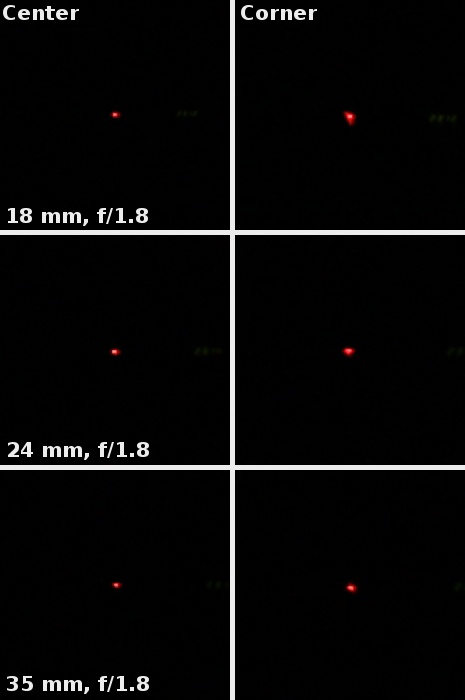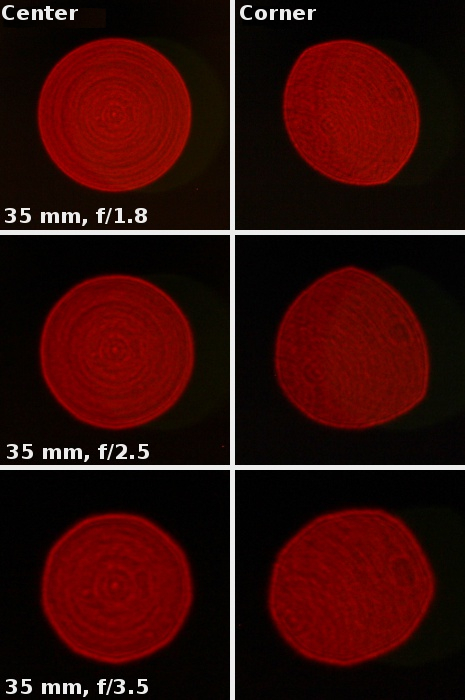Sigma A 18-35 mm f/1.8 DC HSM
7. Coma, astigmatism and bokeh
The coma also makes itself felt at 24 and 35 mm focal length still its level there is lower than at 18 mm so it is not a serious factor, contributing to the decrease of the image quality.

Please Support UsIf you enjoy our reviews and articles, and you want us to continue our work please, support our website by donating through PayPal. The funds are going to be used for paying our editorial team, renting servers, and equipping our testing studio; only that way we will be able to continue providing you interesting content for free. |
- - - - - - - - - - - - - - - - - - - - - - - - - - - - - - - - - - - - - - - - - - - - - - - -
The average difference between vertical and horizontal MTF50 values amounted to just 3.5% so it allows us to describe the astigmatism as very low. It’s worth mentioning here that the 24 mm focal length and f/1.8-2.0 apertures make the biggest contribution to that value.
Defocused images of light points, provided by the Sigma 18-35 mm, are presented below.

The only thing that can make you worried are the concentric rings, perfectly visible at all apertures. Fortunately their intensity is not very high. You should praise a nice, circular aperture and, by and large, the lack of vignetting already by f/3.5.






